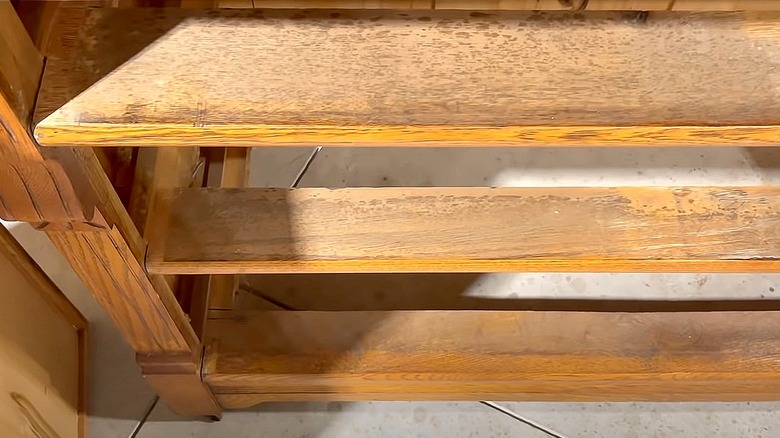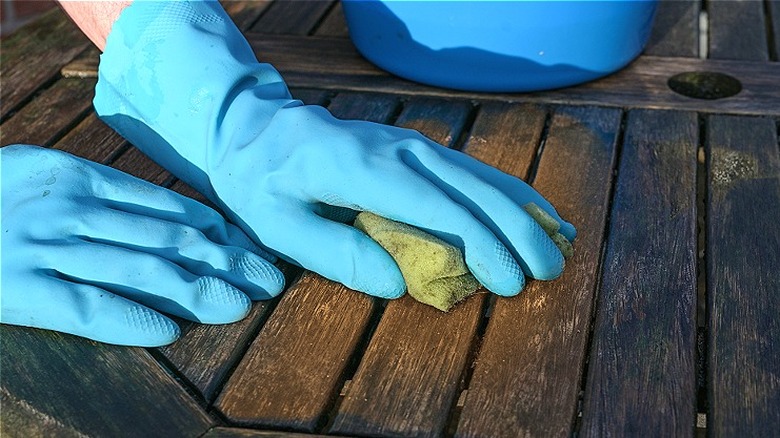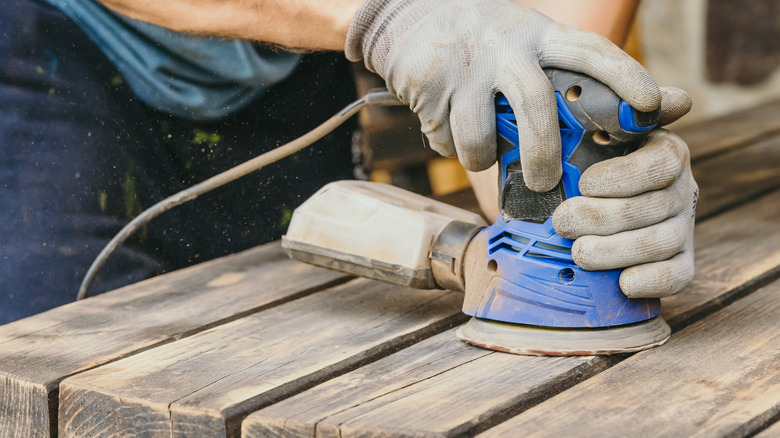The Surefire Way To Successfully Remove Mold From Wood
Having to look at mold-ridden wooden surfaces can be distressing for any homeowner. Caused by a fungus, mold generally appears in poorly ventilated areas experiencing high humidity levels. It colonizes organic substances like wood that retain surface-level moisture or are losing their protective finish. Such moldy infestations can turn your home into a health hazard by aggravating allergies, making it essential to remove the mold swiftly. While replacing the affected wood is the ultimate solution to ensure complete mold removal, it can be impractical for some.
So if you're unwilling to remove the mold-infested wood, alternatively, you can use household items, such as soapy water or white vinegar, to remove mold — that isn't toxic black mold (Stachybotrys chartarum) — with the caveat that the wooden surface is no larger than 10 square feet. Mold-killing paint can also be used to deal with smaller moldy surfaces. With this said, if the discovered mold is black in color, it may be necessary to call in a professional to determine the type of mold, regardless of size.
The best way to remove mold from wood
Before embarking on a mold removal journey, you must wear safety gear, including an N-95 mask, safety goggles, and rubber gloves to prevent mold spores from entering your lungs. Further, it's ideal to clean wooden surfaces outdoors to restrict mold spread. However, if cleaning indoors is the only option, keep your windows open for better ventilation.
Start the cleaning process by sucking out loose mold spores from your damaged wooden surface using a HEPA filter-fitted vacuum, seal the gathered waste in a plastic bag, and discard it. After vacuuming, mix 1 teaspoon of dish soap into a bottle of warm water and spray the soapy solution on the moldy wooden surface and scrub it lightly using a brush and pat dry with a towel or use a dehumidifier. Be sure to dry it completely to prevent mold from growing back.
In case the dish soap solution fails at removing the mold, you can combine distilled white vinegar and warm water in a 50:50 ratio, spray the mix on the wooden surface, and let it dry for an hour. Then, wipe the wood with a damp cloth, followed by dry toweling.
Last-resort measures to remove stubborn mold
If you're dealing with deeply penetrated mold, however, use alkaline mineral salts like borax to remove it. Simply mix 1 tablespoon of borax into 1 cup of water and apply it liberally to the moldy wood for deeper soaking. Then scrub away the mold and dry the cleaned surface. Alternatively, mix ammonia and water in a 1:4 ratio and follow the same steps as the borax solution to remove the mold. If you're tempted to use bleach, steer clear of it, as it cannot penetrate the wood deeply enough to get rid of mold growth in the long run.
Finally, you can sand the moldy surface to eliminate stubborn mold stains. Get a fine sandpaper ranging between 100 and 220 grit and rub it across stained wood to clean mold stains. You can then vacuum-dry the mold spores and repaint the wooden surface with a fungicidal seal finish or fiber-lock paint to restore it to its former glory.


